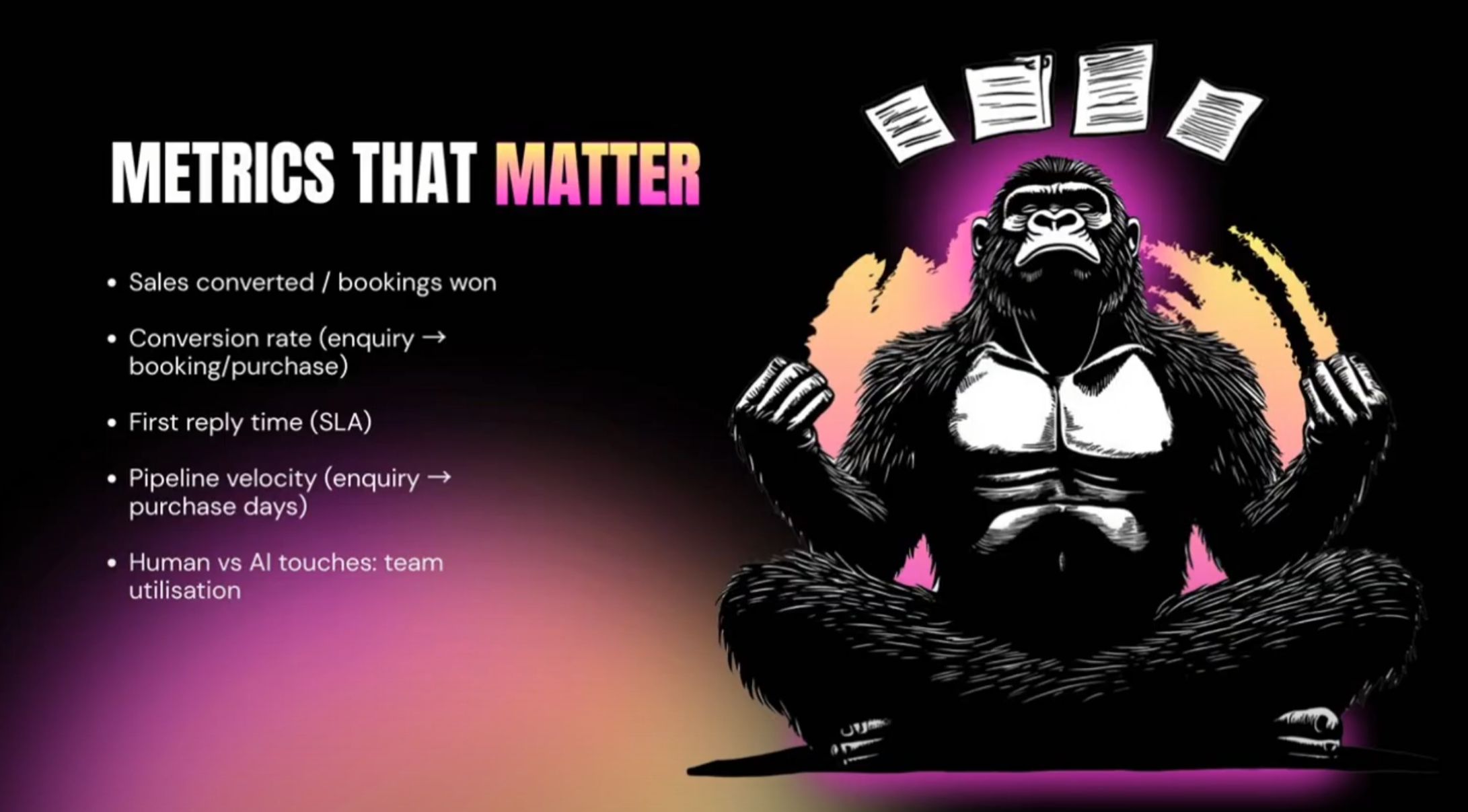
Discover 5 key metrics to measure the true impact of AI in your sales process. Learn how to track conversion rates, reply times, pipeline velocity, team utilization, and ROI to ensure your AI is a revenue driver, not a cost center.
Welcome back to the final installment of our series recapping our webinar How To Use AI To Make Sure You Never Miss An Inbound Lead Again, you can watch the whole video here any time.
Or you can read back through our previous articles here:
In this last article, we’ll bring everything together, moving beyond the "why" and "how" of AI to the most crucial question: Is it working?
Our conversation with Frank Sondors of Salesforge and Dom Chiarenza of SalesApe has shown us that AI isn't just a shiny object—it’s a revenue driver. But to ensure it's delivering on its promise, you need a clear roadmap for success. It's not enough to just implement a solution; you need to measure its impact.
To prove your AI is a revenue driver, not a cost center, you need to track the right metrics. Here’s how you can measure the true impact of your new AI sales solution:
This is the ultimate bottom-line number. Are you actually generating more revenue? The most direct measure of your funnel's efficiency is your conversion rate—the percentage of leads that are converting into paying customers. Your goal should be to see this number increase month over month as the AI refines its processes and handles more of the initial qualification.
This is the foundation of everything we've talked about. Your reply time should be tracked religiously. As we've seen, a faster response leads to a higher conversion rate. An AI agent gives you a sub-60-second reply time, every time, which ensures that no matter when a lead comes in, they’re getting an instant, on-brand response.
Pipeline velocity measures how long it takes a lead to move from initial contact to a closed deal. When you reduce the wait time at the top of the funnel, you inherently shorten your sales cycle. By automating the early stages of the sales journey, you can see a significant increase in the speed at which deals close, leading to more revenue in less time.
This metric brings everything together. It measures team utilization by tracking what percentage of your SDRs' time is spent on high-value versus low-value tasks. You should see a significant shift in this metric. Your sales team should be spending less time on tedious follow-ups and data entry, and more time on meaningful, high-impact interactions. This is the proof that the blended model is working—you're getting more results with fewer human touches.
Ultimately, you need to calculate the ROI of your new system. The easiest way to do this is to compare a "human-only" approach to a "human-plus-AI" approach. Track your cost per lead and customer acquisition cost before and after implementing the AI. You'll likely find that by automating repetitive tasks, you're not only increasing conversions but also drastically reducing operational costs. According to some research, businesses that adopt AI can see a return of over 300% on their investment within the first year.
We've now reached the end of our series on inbound sales optimization. Over the last several articles, we've broken down key strategies and data from our webinar with Frank Sondors and Dom Chiarenza. We've shown you that speed is paramount to inbound success, and that human-centric bottlenecks are holding many businesses back. We’ve also explored the blended model—the powerful combination of AI and human expertise—and demonstrated its effectiveness through a real-world case study.
By adopting a blended approach, you can create a reliable, scalable system that not only drives more conversions but also empowers your team to focus on what they do best. Your salespeople will be able to leave the repetitive tasks to an AI agent, freeing them up to build stronger relationships and close more deals. It's about working smarter, not harder. The future of sales is a partnership between humans and AI, and by embracing this change, your business can unlock its full potential.
And don’t forget, if you’ve got any questions, or you just want to see a real AI SDR in action (any time) you can get in touch with us hello@salesape.ai or book yourself a demo.